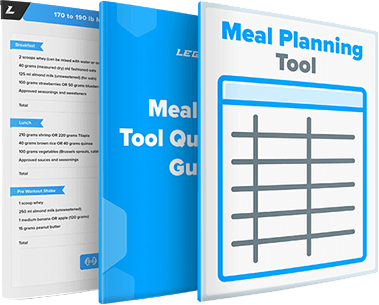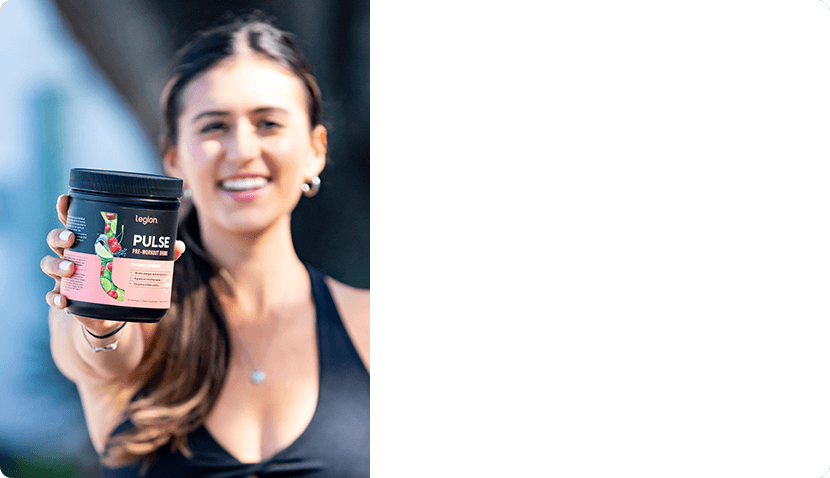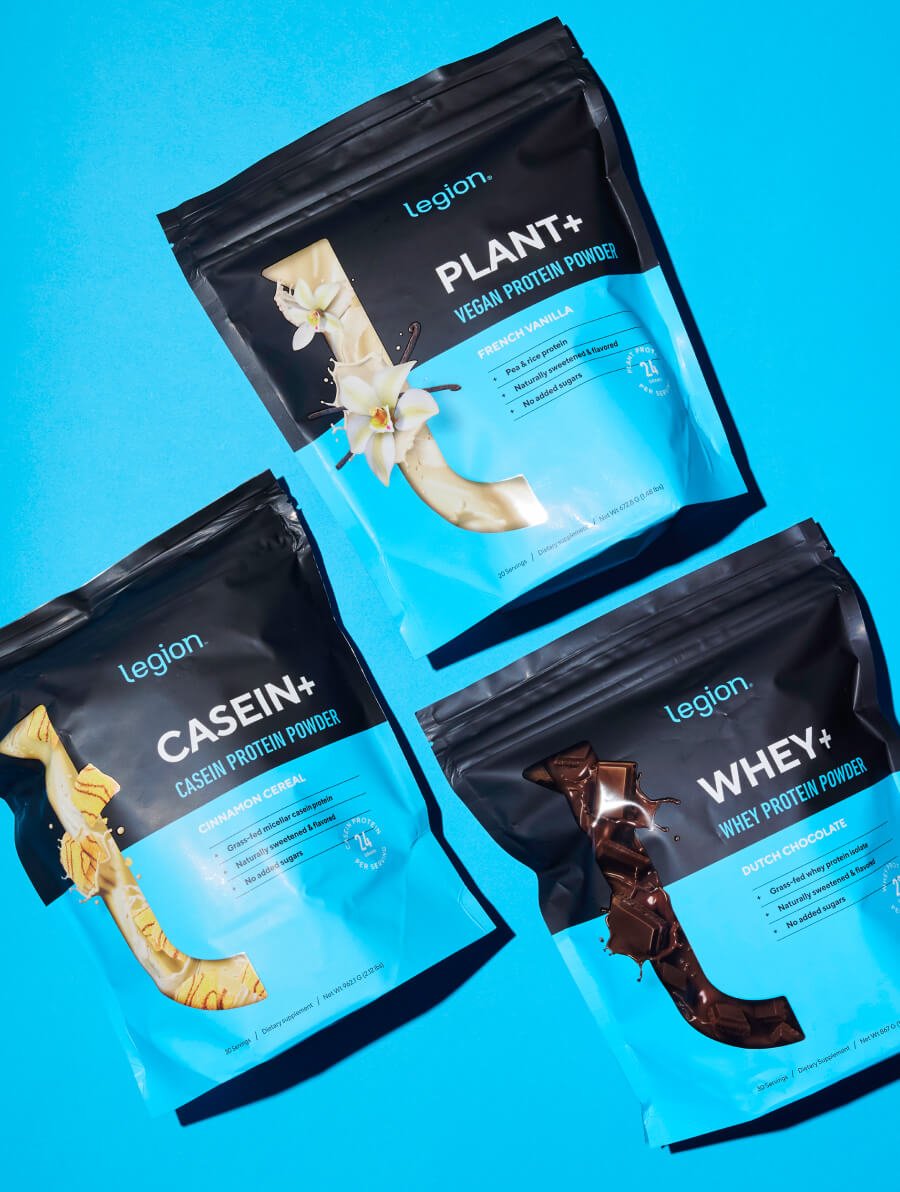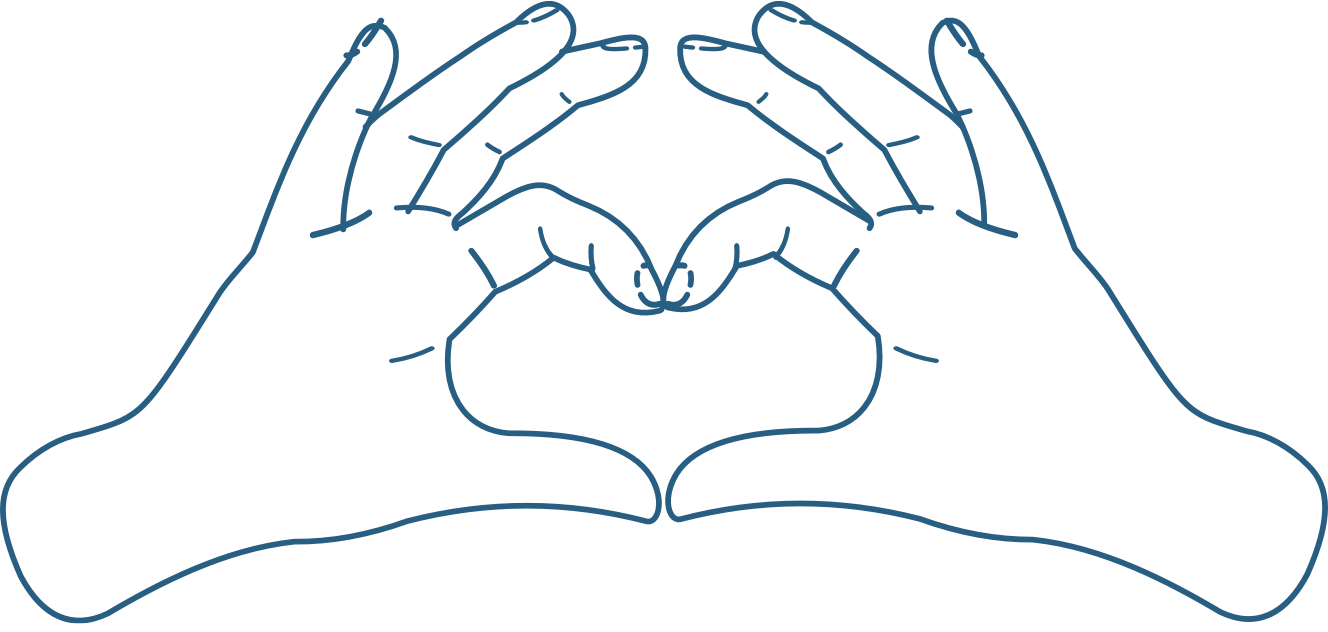Listen on Apple Podcasts | Listen on Spotify | Listen on YouTube
If you’ve spent any time in the fitness space, you’ve heard more weight loss pitches than a TV-loving insomniac.
You know, stuff like…
“This powder is the ‘secret’ to losing 10, 20, even 30 pounds in just a month!”
“This pill blocks the absorption of carbs and suppresses your appetite!”
“A few of these per day and you can eat anything and still lose weight!”
And if you’re like most people, you’ve probably gone in for a few.
“Who knows?” you’ve thought. “Maybe it actually works?”
Well, it’s okay. We’ve all been there. And now we’re skeptical of anything that claims to help us lose weight faster.
That’s good. We should be.
(We should be equally skeptical of any supplement that claims to help with muscle building, too.)
That brings us to this episode and to the supplement synephrine.
It’s commonly found in pre-workout supplements because it’s a light stimulant and in fat burner supplements because it purportedly accelerates weight loss.
How beneficial is it really, though, and what kind of results can you really expect? And what about dosages and side effects?
Let’s tackle all those questions and more and find out if synephrine is worth your money and attention.
Would you rather read about synephrine supplementation? Then check out this article!
TIME STAMPS
4:00 – What is synephrine?
5:36 – What are the benefits of synephrine?
10:10 – What is the clinically effective dosage of synephrine?
10:57 – What results can I expect with synephrine supplementation?
13:20 – What are the side effects of synephrine?
14:21- What are the best synephrine supplements?
What did you think of this episode? Have anything else to share? Let me know in the comments below!
Transcript:
Sinephrine can aid in mobilizing these stubborn fat cells by blocking the activity of those alpha receptors in the fat cells. So in other words, Sinephrine can help prevent the alpha receptors in your fat cells from putting the brakes on your metabolism. fat mobilization.
Hey, Mike Matthews here from muscle for life and legion athletics. Welcome to another episode of muscle for life podcast. And this time around, we’re going to be talking synephrine, which is a very popular weight loss supplement. And if you’ve spent any time in the fitness space, you’ve probably heard more weight loss.
pitches than a tv loving insomniac. You’ve heard a lot. You’ve heard stuff like, this powder is the secret to losing 10, 20, even 30 pounds in just a month. This pill blocks the absorption of carbs and suppresses your appetite. A few of these pills per day and you can eat anything you want and still lose weight.
And if you’re like most people, you’ve probably gone in for at least a few of these, just cause, who knows, you’ve probably thought, maybe it actually works, whatever, it’s 30 bucks, how bad can it be? And I understand, we’ve all been there, and many of us are now skeptical of anything that claims to help us lose weight faster, and we should be.
I think we should also be skeptical of really, Any supplement that claims to do anything these days, especially muscle building and fat burning. Now, those are the two supplements that we really need to regard with the most skepticism, which brings us to synephrine, which is what, of course, we’re gonna be talking about today.
This is commonly found in pre workout supplements because it is a light stimulant and in fat burner supplements because it purportedly accelerates weight loss. How true are these things though? How beneficial is synephrine really? And what kind of results can you really expect from it? And what about dosages and side effects and safety and so forth?
We are going to tackle all that and more in today’s podcast and find out if Sinefren is worth your money and attention. This is where I would normally plug a sponsor to pay the bills. But I’m not big on promoting stuff that I don’t personally use and believe in, so instead I’m just going to quickly tell you about something of mine.
Specifically, my fitness book for men, Bigger, Leaner, Stronger. Now this book has sold over 350, 000 copies in the last several years and helped thousands and thousands of guys build their best bodies ever, which is why it currently has over 3, 100 reviews on Amazon with a Four and a half star average. So if you want to know the biggest lies and myths that are keeping you from achieving the lean, muscular, strong, and healthy body that you truly desire.
And if you want to learn the simple science of building the ultimate male body, then you want to read bigger, leaner, stronger, which you can find on all major online retailers like Amazon, Audible, iTunes, Kobo, and the internet. Google play. Now, speaking of audible, I should also mention that you can get the audio book 100 percent free when you sign up for an audible account, which I highly recommend that you do.
If you’re not currently listening to audio books, I love them myself because they let me make the time that I spend doing stuff like commuting, prepping food, walking my dog and so forth. So much more valuable and productive. So if you want to, Take Audible up on this offer and get my book for free. Then simply go to www.bitlybitly.com/free BBLs, and that will take you to Audible and then you just click the sign up today and Save button, create your account.
And voila, you get to listen to Bigger, leaner, stronger for Free. Alrighty, that is enough shameless plugging for now, at least let’s get to the show. All right, so let’s start as we always do at the beginning. What is Sinephrine? Sinephrine is a naturally occurring substance known as an alkaloid that is found in plants, and it is particularly abundant in the bitter orange fruit, which is why it’s also often referred to by that name.
In traditional Chinese medicine, Sinephrine has been used as an antidepressant. for thousands of years now, and it was obtained mainly via citrus peels. And it’s very chemically similar to a fedrin and pseudo a fedrin, which you will find in many over the counter, cold and allergy medications and weight loss and energy supplements that contain the herb Mah Huang.
And accordingly, sinephrine impacts the adrenal system of the human body and increases. Basal metabolic rate, which accounts for up to 70 percent of our daily caloric expenditure. So that is the first key takeaway on Sinephrine is studies do show that it speeds up your metabolism, which can contribute to fat loss and weight management.
And the reason for that, of course, is simple. If you want to lose fat, you need to burn more energy than you are eating. And of course, then anything that helps you burn more energy, like synephrine, caffeine, and exercise can help you lose fat faster. If you are also regulating your intake. Now, sinephrine is also often sold as a stubborn fat burner, something that helps you burn the stubborn fat around your, for guys, it’s usually the lower abs and the love handles.
And for girls, it’s usually the hips and thighs. And of course that sounds like hooey, but there is actually some science to back it up, which we will get to in a minute. Now let’s talk about efficacy. What are the benefits of Sinephrine? How well does it work? As you would expect from a mild stimulant that does increase energy expenditure, the main benefit of Sinephrine supplementation is faster weight loss.
For example, one study found that a single dose of 50 milligrams of Sinephrine increased basal metabolic rate by 65 calories over the course of the next week. 75 minutes. And interestingly, research shows that this metabolic boost can be significantly increased to over 180 calories by combining sinephrine with two other molecules that are found in the bitter orange fruit, naringin and That’s significant.
That’s the same amount of calories burned in about 20 minutes of jogging. That’s an additional 1300 calories burned every seven days or so, which is a little more than one third of the calories in a pound of fat. Now I know you have to burn a bit more than that to actually lose a pound of fat, but a pound of fat does contain about 3, 500 calories.
And that amount of energy expenditure that boost. And that’s why I’ve included a clinically effective dosage of all three of those molecules in my fat burner, Phoenix, which you can learn more about at legionathletics. com slash Phoenix. Now, furthermore, studies also show that sinephrine works synergistically with caffeine to enhance both caffeine and its own fat loss properties.
So in other words, if you take caffeine and sinephrine together, you’re going to burn more fat than if you took them separately. Thank you. It’s also worth noting that the synergism in a standard ECA stack, ephedrine, caffeine, aspirin, you’ve probably heard that in bodybuilding circles. That synergism also applies to synephrine.
Research shows that another benefit of synephrine is it can increase the thermic Effect of food, which is the amount of energy it costs to digest and absorb the food that we eat which is also a pretty significant portion of our daily energy expenditure. It ranges between 10 and 20%, depending on the breakdown of our diets and this effect of sinephrine, this boost in the thermic effect of food is particularly present in women.
And what this ultimately means is more energy expenditure and thus more fat loss. Hey, quickly before we carry on, if you are liking my podcast, would you please help spread the word about it? Because no amount of marketing or advertising gimmicks can match the power of word of mouth. So if you are enjoying this episode and you think of someone else who might enjoy it as well, please do tell them about it.
It really helps me. And if you are going to post about it on social media, definitely tag me so I can say. Thank you. You can find me on Instagram at muscle for life, fitness Twitter at muscle for life and Facebook at muscle for life fitness. Another benefit is something I touched on a few minutes ago, and that is synephrine effects on stubborn fat.
Now the physiology in play here is fairly complex, but the long story short is The fat burning process in your body is regulated by chemicals called catecholamines. These molecules bind with receptors on fat cells and then trigger the release of stored energy for burning. The problem though is some fat cells are very resistant to mobilization.
That is, they don’t respond to the catecholamines like other fat cells, which are much easier to burn and get rid of. Now, this is why when you start a fat loss regimen, you immediately see results in certain areas of your body, like your chest, arms, and face, but then next to nothing in other areas of your body, like your stomach.
hips and thighs. And the reason for this is fat cells have two types of receptors for these catecholamines. They have alpha receptors and beta receptors. These receptors are pretty much diametrically opposed in function in that alpha receptors actually hinder fat mobilization and beta receptors activate it.
So fat cells that have a lot of beta receptors are relatively easy to burn. Shrink really, you get the idea. You’re not actually burning away fat cells. You’re just shrinking them. Whereas fat cells with a high amount of alpha receptors are not easy. Because again, they just do not respond as quickly to catecholamines.
And synephrine can aid in mobilizing these stubborn fat cells by blocking the activity of those alpha receptors in the fat cells. So in other words, synephrine can help prevent the alpha receptors in your fat cells from putting the brakes on. Fat mobilization. Last but not least is the fact that anything that has the ability to increase catecholamine activity, which sinephrine does, of course, because it’s a stimulant, can also suppress hunger between meals, simply because that’s a component of the fight or flight response of the body.
That’s why sinephrine’s appetite blunting effects have been demonstrated in animal research and also have a fair amount of anecdotal support as well. Many people do find that is an effective appetite suppressant. So what about dosage? How much synephrine do you have to take to get results? And really what we want to know here is the clinically effective dosage, which is the amount of something that is used in this case, a supplement, or it could be a drug that is used in a scientific study that demonstrated benefits because it’s not enough to just know that synephrine can improve fat loss.
You also, of course, need to know how much You need to take to see results. And when you review the literature on Sinephrine, you find that a wide variety of dosages have been used for weight loss purposes. However, the most effective dosages were in the range of 25 to 50 milligrams per day and 50 milligrams significantly outperforms 25 milligrams.
Okay. So let’s say you are looking at taking 50 milligrams of Sinephrine a day. What type of results Should you experience now, the first thing you need to know here is that all natural supplements, sinephrine is not a wonder pill. You don’t want to pin unrealistically high expectations on it.
Remember that supplements do not build great physiques. No amount of pills or powders is going to give you the body. You want proper training, proper diet. Those are the things that get you there. Supplementation can help. It can be. Supplementary by definition, but it’s never one of the pillars that said, here’s what you can expect from synephrine supplementation.
You can expect a slight increase in your basal metabolic rate. You can expect a slight decrease in the activity of fat cell receptors that prevent fat mobilization. And you can expect a slight increase in the thermic effective food, which of course, again, is the energy cost of metabolizing food. Those are three Reliable scientifically validated benefits that you can expect.
And if that doesn’t sound all that sexy, I do understand, but I am just calling it like it is. I’m not going to oversell synephrine to you. That said, it doesn’t mean that you shouldn’t supplement with it. It just means that you shouldn’t supplement only with it. If you really want to see improvements. But the same can be said about most natural supplements by themselves individually, they’re usually pretty underwhelming.
If you combine them in the right ways, though, if you take the right ones together, the cumulative effects can become noticeable. So for example, if you pair Sinephrine with Naringin and hesperidin, you can triple the metabolic boost. And then if you add caffeine in as well, the effects become even more pronounced.
Now, in terms of bottom line results, bottom line fat loss, if you did take these four supplements every day, synephrine, Naringin, hesperidin, caffeine, and especially before working out, because that makes them even more effective. It is very reasonable to assume that you can lose an additional half a pound of fat per week.
And that is definitely enough to matter, especially if you need to lose a fair amount of weight and you’re going to be cutting for a fair amount of time. And you also consistently train hard and eat right. And I should also mention that you can lose fat and stubborn fat in particular, even faster when you add yohimbine into the mix.
So that’s my personal natural fat loss stack. It is. Yohimbine, Sinephrine, Naringin, Hesperidin, Caffeine. Okay, so what about side effects? Does Sinephrine have side effects? If you poke around on the internet for an answer, you are going to find dire warnings that Sinephrine can increase the risk for high blood pressure, fainting, heart attack, stroke, and other very severe side effects.
The reality though is, several studies have demonstrated that Sinephrine does not increase side effects. And research shows that it is generally safe and well tolerated. The reality is if you’re like most people, you’re not going to notice much of anything. When you take sinephrine, it’s just not that powerful of a stimulant.
Most people report a slight increase in energy with None of the downsides generally associated with any stimulants, including caffeine, like jitters, nausea, rapid heartbeat, and so forth. That said, if you have any medical conditions, or if you take any medications that might contraindicate supplementation with synephrine, definitely consult your doctor before using it.
Examples here are high blood pressure, antidepressants, and HIV slash AIDS. Okay, so what are the best synephrine supplements? When you go synephrine shopping, you’re mostly going to find fat burners. And of course, you know that no amount of fat burners are going to get you lean. A good fat burner can help, But it is not going to allow you to eat whatever you want and skip your workouts.
You have to be on point with your diet, on point with your training, and then supplementation can make a difference because unfortunately there just aren’t any safe, natural fat burning compounds that are powerful enough to all on their own, just cause meaningful fat reduction. Now as I mentioned earlier, the problem with Sinephrine is its effects are rather mild and inconsequential when taken by itself.
We recall that 50 milligrams can increase the basal metabolic rate by 60 to 70 calories and that’s just not going to move the needle much. As we know, we can amplify the effect. These effects by combining synephrine with a few other molecules. And that’s why again, my fat burner Phoenix contains clinically effective dosages of each of them.
I also left caffeine out of it because chances are you’re like most of the fitness folk out there and you’d rather get your caffeine from. Things other than fat burning pills like coffee or pre workouts and so forth. So the bottom line here is Snefrin is one of the few fat loss supplements that are affordable and proven to accelerate weight loss.
And especially when combined with several others, as we have discussed, if your budget permits, I do think these are a worthy addition to your supplement regimen, especially when you’re cutting. Don’t buy into the hype though. Synephrine alone isn’t going to triple your fat loss or melt stubborn fat off your body.
It definitely can help you burn more calories and thus more fat. And it can also help you attack the blubber covering your abs, hips, and thighs. And that in time can result in greater progress toward the body you really want. Hey there, it is Mike again. I hope you enjoyed this episode and found it interesting and helpful.
And if you did, and don’t mind doing me a favor and want to help me make this the most popular health and fitness podcast on the internet, then please leave a quick review of it on iTunes or wherever you’re listening from. This not only convinces people that they should check the show out. It also increases its search visibility.
And thus helps more people find their way to me and learn how to build their best bodies ever too. And of course, if you want to be notified when the next episode goes live, then just subscribe to the podcast and you won’t miss out on any of the new goodies. Lastly, if you didn’t like something about the show, then definitely shoot me an email at mike at muscle for life.
com and share your thoughts on how you think it could be better. I read everything myself and I’m always looking for constructive feedback, so please do reach out. All right, that’s it. Thanks again for listening to this episode and I hope to hear from you soon. And lastly, this episode is brought to you by me.
Seriously though, I’m not big on promoting stuff that I don’t personally use and believe in, so instead I’m going to just quickly tell you about something of mine. Specifically, my fitness book for men, Bigger, Leaner, Stronger. Now this book has sold over 350, 000 copies in the last several years. And helped thousands and thousands of guys build their best bodies ever, which is why it currently has over 3,100 reviews on Amazon with a four and a half star average.
So if you want to know the biggest lies and myths that are keeping you from achieving the lean, muscular, strong, and healthy body that you truly desire, and if you wanna learn the simple science of building the. Ultimate male body, then you want to read bigger, leaner, stronger, which you can find on all major online retailers like Amazon, Audible, iTunes, Kobo, and Google play.
Now, speaking of Audible, I should also mention that you can get the audio book 100 percent free when you sign up for an Audible account, which I highly recommend that you do. If you’re not currently subscribed. Listening to audio books. I love them myself because they let me make the time that I spend doing stuff like commuting, prepping food, walking my dog and so forth so much more valuable and productive.
So if you want to take Audible up on this offer and get my book for free, then simply go to www.bitlybitly.com/free BBLs, and that will take you to Audible and then you just click the sign up today and Save button, create your account. And voila, you get to listen to Bigger, leaner, stronger for Free.
Scientific References +
- Wurtman, R. J., & Wurtman, J. J. (1995). Brain serotonin, carbohydrate-craving, obesity and depression. In Obesity research: Vol. 3 Suppl 4. Obes Res. https://doi.org/10.1002/j.1550-8528.1995.tb00215.x
- Ceci, F., Cangiano, C., Cairella, M., Cascino, A., Del Ben, M., Muscaritoli, M., Sibilia, L., & Rossi Fanelli, F. (1989). The effects of oral 5-hydroxytryptophan administration on feeding behavior in obese adult female subjects. Journal of Neural Transmission, 76(2), 109–117. https://doi.org/10.1007/BF01578751
- Finberg, J. P. M., & Gillman, K. (2011). Selective inhibitors of monoamine oxidase type B and the “cheese effect.” In International Review of Neurobiology (Vol. 100, pp. 169–190). Academic Press Inc. https://doi.org/10.1016/B978-0-12-386467-3.00009-1
- Dulloo, A. G., & Miller, D. S. (1987). Aspirin as a promoter of ephedrine-induced thermogenesis: Potential use in the treatment of obesity. American Journal of Clinical Nutrition, 45(3), 564–569. https://doi.org/10.1093/ajcn/45.3.564
- Astrup, A., Toubro, S., Christensen, N. J., & Quaade, F. (1992). Pharmacology of thermogenic drugs. American Journal of Clinical Nutrition, 55(1 SUPPL.). https://doi.org/10.1093/ajcn/55.1.246s
- Schmid, B., Kötter, I., & Heide, L. (2001). Pharmacokinetics of salicin after oral administration of a standardised willow bark extract. European Journal of Clinical Pharmacology, 57(5), 387–391. https://doi.org/10.1007/s002280100325
- Jagtap, M., Ravishankar, B., & Chandola, H. (2011). Clinical efficacy of Coleus forskohlii (Willd.) Briq. (Makandi) in hypertension of geriatric population. AYU (An International Quarterly Journal of Research in Ayurveda), 32(1), 59. https://doi.org/10.4103/0974-8520.85729
- Godard, M. P., Johnson, B. A., & Richmond, S. R. (2005). Body composition and hormonal adaptations associated with forskolin consumption in overweight and obese men. Obesity Research, 13(8), 1335–1343. https://doi.org/10.1038/oby.2005.162
- Walsh, D. A., & Van Patten, S. M. (1994). Multiple pathway signal tran sduction by the cAMP‐dependent protein kinase. The FASEB Journal, 8(15), 1227–1236. https://doi.org/10.1096/fasebj.8.15.8001734
- Maki, K. C., Reeves, M. S., Farmer, M., Yasunaga, K., Matsuo, N., Katsuragi, Y., Komikado, M., Tokimitsu, I., Wilder, D., Jones, F., Blumberg, J. B., & Cartwright, Y. (2009). Green tea catechin consumption enhances exercise-induced abdominal fat loss in overweight and obese adults. Journal of Nutrition, 139(2), 264–270. https://doi.org/10.3945/jn.108.098293
- Hursel, R., Viechtbauer, W., & Westerterp-Plantenga, M. S. (2009). The effects of green tea on weight loss and weight maintenance: A meta-analysis. In International Journal of Obesity (Vol. 33, Issue 9, pp. 956–961). Int J Obes (Lond). https://doi.org/10.1038/ijo.2009.135
- Zhu, B. T., Shim, J. Y., Nagai, M., & Bai, H. W. (2008). Molecular modelling study of the mechanism of high-potency inhibition of human catechol-O-methyltransferase by (-)-epigallocatechin-3-O-gallate. Xenobiotica, 38(2), 130–146. https://doi.org/10.1080/00498250701744641
- Stohs, S. J., Preuss, H. G., & Shara, M. (2011). The safety of Citrus aurantium (bitter orange) and its primary protoalkaloid p-synephrine. In Phytotherapy Research (Vol. 25, Issue 10, pp. 1421–1428). Phytother Res. https://doi.org/10.1002/ptr.3490
- Gougeon, R., Harrigan, K., Tremblay, J. F., Hedrei, P., Lamarche, M., & Morais, J. A. (2005). Increase in the thermic effect of food in women by adrenergic amines extracted from citrus aurantium. Obesity Research, 13(7), 1187–1194. https://doi.org/10.1038/oby.2005.141
- Sale, C., Harris, R. C., Delves, S., & Corbett, J. (2006). Metabolic and physiological effects of ingesting extracts of bitter orange, green tea and guarana at rest and during treadmill walking in overweight males. International Journal of Obesity, 30(5), 764–773. https://doi.org/10.1038/sj.ijo.0803209
- Haller, C. A., Benowitz, N. L., & Jacob, P. (2005). Hemodynamic effects of ephedra-free weight-loss supplements in humans. American Journal of Medicine, 118(9), 998–1003. https://doi.org/10.1016/j.amjmed.2005.02.034
- Verpeut, J. L., Walters, A. L., & Bello, N. T. (2013). Citrus aurantium and Rhodiola rosea in combination reduce visceral white adipose tissue and increase hypothalamic norepinephrine in a rat model of diet-induced obesity. Nutrition Research, 33(6), 503–512. https://doi.org/10.1016/j.nutres.2013.04.001
- Brown, C. M., McGrath, J. C., Midgley, J. M., Muir, A. G. B., O’Brien, J. W., Thonoor, C. M., Williams, C. M., & Wilson, V. G. (1988). Activities of octopamine and synephrine stereoisomers on α‐adrenoceptors. British Journal of Pharmacology, 93(2), 417–429. https://doi.org/10.1111/j.1476-5381.1988.tb11449.x
- Strosberg, A. D. (1993). Structure, function, and regulation of adrenergic receptors. In Protein Science (Vol. 2, Issue 8, pp. 1198–1209). Protein Sci. https://doi.org/10.1002/pro.5560020802
- Lefkowitz, R. J. (1979). Direct binding studies of adrenergic receptors: Biochemical, physiologic, and clinical implications. In Annals of Internal Medicine (Vol. 91, Issue 3, pp. 450–458). Ann Intern Med. https://doi.org/10.7326/0003-4819-91-3-450
- Nelson, B. C., Putzbach, K., Sharpless, K. E., & Sander, L. C. (2007). Mass spectrometric determination of the predominant adrenergic protoalkaloids in bitter orange (Citrus aurantium). Journal of Agricultural and Food Chemistry, 55(24), 9769–9775. https://doi.org/10.1021/jf072030s
- Frank, K., Patel, K., Lopez, G., & Willis, B. (2020). Ephedrine Research Analysis. https://examine.com/supplements/ephedrine/
- Sargis MD, P. R. M. (n.d.). An Overview of the Adrenal Glands - Beyond Fight or Flight. Retrieved October 13, 2020, from https://www.endocrineweb.com/endocrinology/overview-adrenal-glands
- Haaz, S., Fontaine, K. R., Cutter, G., Limdi, N., Perumean-Chaney, S., & Allison, D. B. (2006). Citrus aurantium and synephrine alkaloids in the treatment of overweight and obesity: An update. In Obesity Reviews (Vol. 7, Issue 1, pp. 79–88). Obes Rev. https://doi.org/10.1111/j.1467-789X.2006.00195.x
- Stohs, S. J., Preuss, H. G., Keith, S. C., Keith, P. L., Miller, H., & Kaats, G. R. (2011). Effects of p-synephrine alone and in combination with selected bioflavo-noids on resting metabolism, blood pressure, heart rate and self-reported mood changes. International Journal of Medical Sciences, 8(4), 295–301. https://doi.org/10.7150/ijms.8.295
- Seifert, J. G., Nelson, A., Devonish, J., Burke, E. R., & Stohs, S. J. (2011). Effect of acute administration of an herbal preparation on blood pressure and heart rate in humans. International Journal of Medical Sciences, 8(3), 192–197. https://doi.org/10.7150/ijms.8.192
- Gougeon, R., Harrigan, K., Tremblay, J. F., Hedrei, P., Lamarche, M., & Morais, J. A. (2005). Increase in the thermic effect of food in women by adrenergic amines extracted from citrus aurantium. Obesity Research, 13(7), 1187–1194. https://doi.org/10.1038/oby.2005.141










